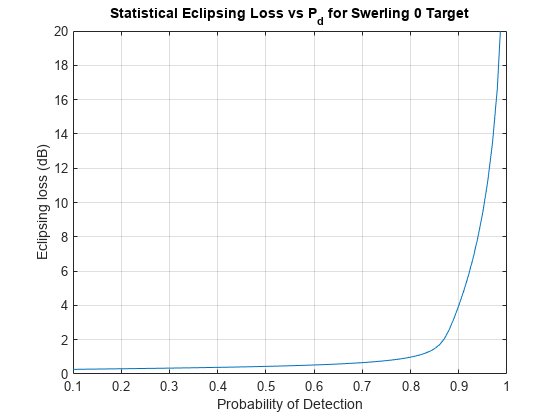eclipsingloss
Syntax
Description
LECL = eclipsingloss(PD,PFA,N)LECL, in decibels for an
unmodulated rectangular pulse with a duty cycle of 0.1 given the
probability of detection, PD, the probability of false alarm,
PFA, and the number of received pulses, N. The
function assuming you are using a square-law detector and a nonfluctuating target.
Examples
Input Arguments
Output Arguments
Extended Capabilities
Version History
Introduced in R2021a
